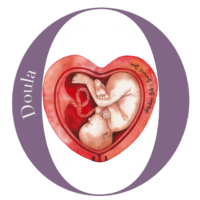As a sort of rider to birth plans in early pregnancy, it is important to set apart and articulate aspects of your experience as they pertain to emergency room birth.
If you are experiencing an impending miscarriage and arrive at the hospital emergency room, you might:
- Inform the hospital staff of a possibly impending miscarriage.
- Know that in most instances, life preserving or death delaying care might not be possible. Furthermore, the hospital staff may seem to delay your care, by necessity of caring for other patients who might have a greater likelihood of the successful outcome of implementing death delaying or life preserving care.
- Have as many of your own tangible resources should the birth of your baby occur while using the waiting room bathroom or while waiting in an emergency room screened room. This can include items from the early pregnancy home birth plan, including your own strainer.
- Ensure that the bathroom you are using has deactivated any auto-flush system or that you have a strainer or other screen each and every time you use the bathroom.
- Have any tangible documentation or information about your obstetrical history. While an emergency room ultrasound may give some information, it is best to compare it to your full obstetrical history for the most information.
If you are a member of the emergency room care team, you might:
- Have medical grade miscarriage strainer or speci-pan for toilet use.
- Check hCG and/or progesterone levels of the patient.
- Have a working knowledge or listing of state laws regarding birth and death certificates.
- Provide the patient with all options for the physical form of her baby, including returning the specimen to her either before or after any medical testing.
- If the patient is or believes to be at approximately 16 gestation weeks or older, utilize our lactation awareness and support pages.
- Contact a local SBD Doula for support.
Rate this post
0
0
votes
Article Rating













